This week for Coffee With A Codex we pulled out Ms. Codex 1630, a 15th-century copy of Rhetorica ad Herennium, the earliest comprehensive Latin treatise on rhetoric, composed in the first century B.C. and frequently attributed to Cicero through the Middle Ages and into the Renaissance.
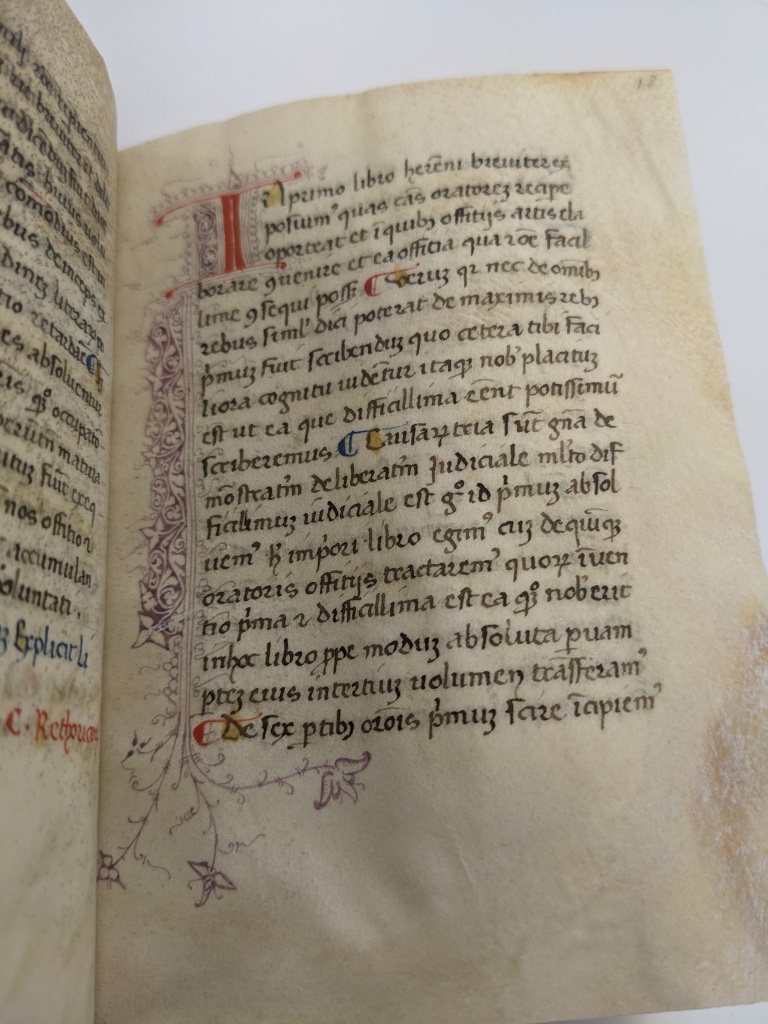
As an added treat, we also looked at Ms. Codex 1629, a 14th century copy of a commentary on the same text. Rhetorica ad Herennium was the foundation for the study of rhetoric in the medieval and Renaissance periods. This manuscript was written in northern Italy, perhaps Venice or Bologna; the colophon on f. 34v is dated 1342.
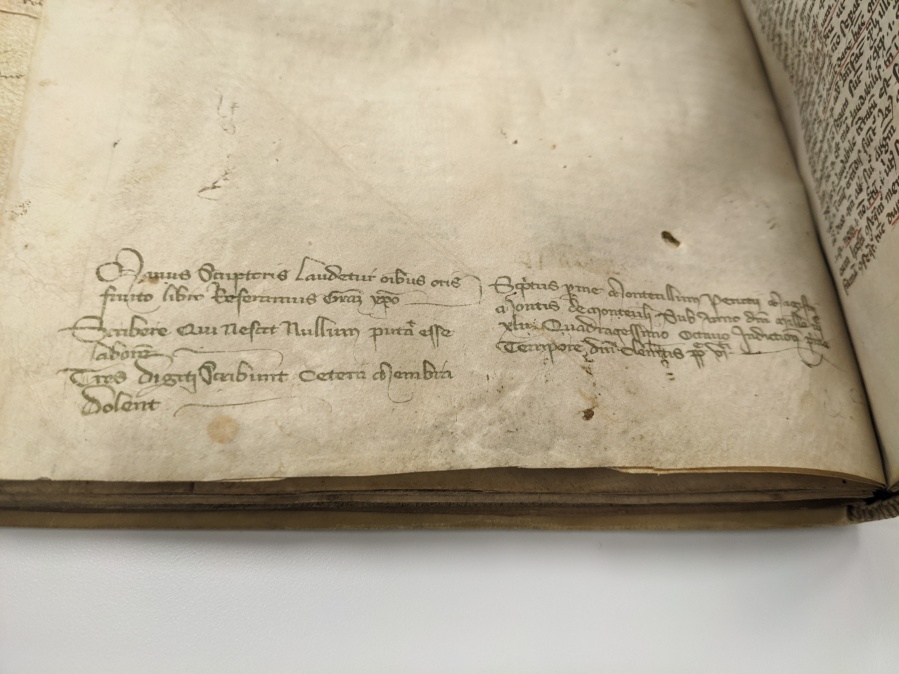
Ms. Codex 1630 was written about 100 years later, also in northern Italy, possibly Venice, between 1440 and 1460
Ms. Codex 1630 is in an unusual small format. It is divided into 6 books rather than the customary 4, with the influential Book 4 divided into 3 parts so that Book 5 contains the figures of diction and Book 6 contains the figures of thought.



It is decorated with penwork initials and numerous 2-line initials alternating between red with blue penwork and blue with red penwork; there are also alternating red and blue paragraph marks. The alternating colors act as guides to readers, similar to alternating grey and white rows in an Excel spreadsheet.
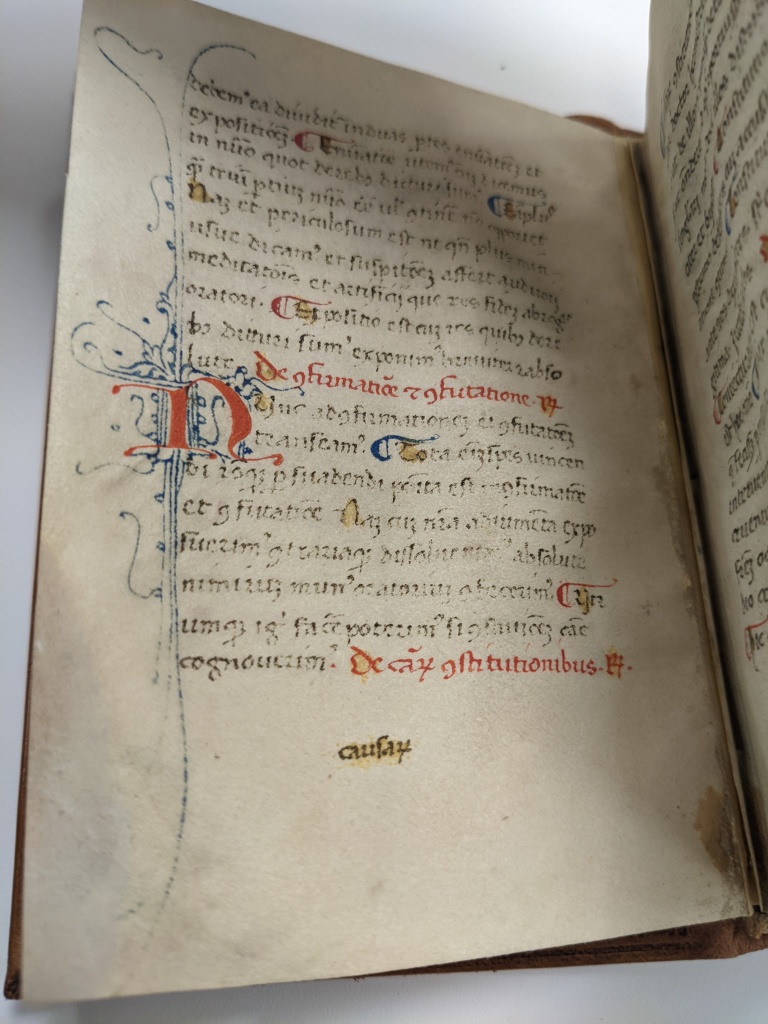
While Ms. Codex 1630 is rather fine, with its colored penwork initials and highlighted catchwords, Ms. Codex 1629 is messy, and with parchment that is quite a contrast to the smooth, creaminess of Ms. Codex 1630. The parchment is generally stiff, the hair and flesh sides are easily differentiated, the edges are uneven and there are many armpits and holes. The book was most likely written as a student’s copy, so beauty would not have been on the top of the list; more important to keep it inexpensive. So it makes sense that Ms. Codex 1629 makes intensive use of offcuts (edge pieces that wouldn’t be used for more formal books) and reused parchment (palimpsests – see below).




There were attempts to heal the parchment as it was being made, sometimes leaving sewing scars in the middle of the text area.



Frequent notes appear in the margins of Ms. Codex 1629. Lemmata from the main text are underlined in red, and the commentary is provided after.
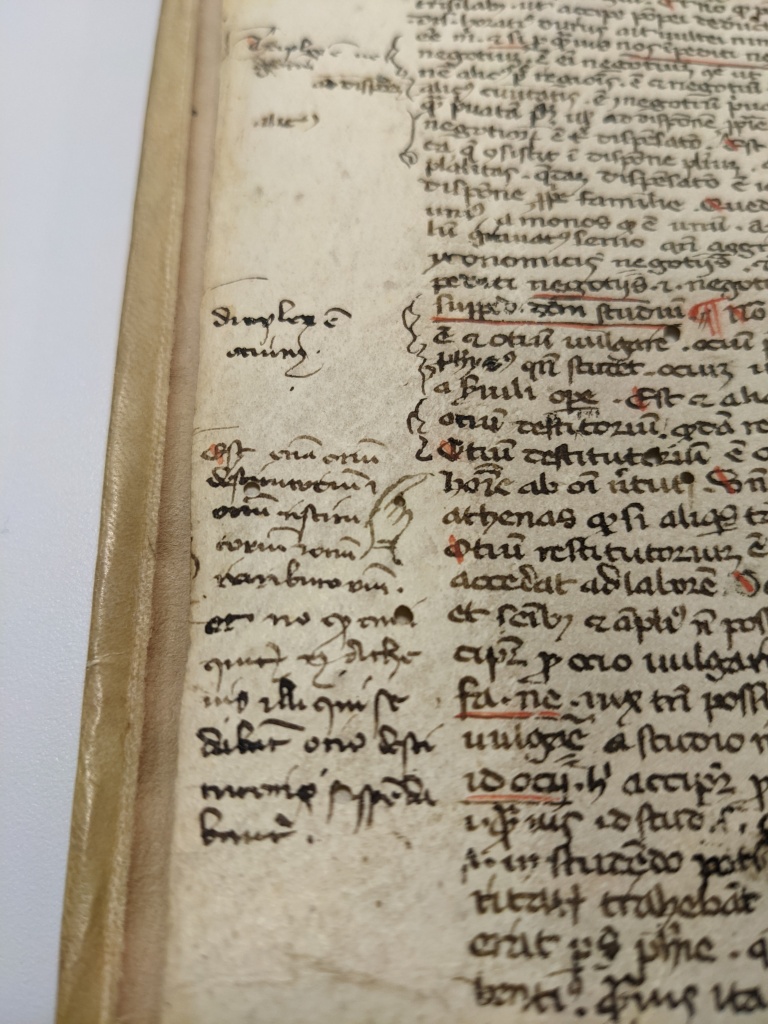

Some leaves are palimpsests, written on parchment previously used for Italian legal documents, and some previous text is faintly visible perpendicular to the later text.

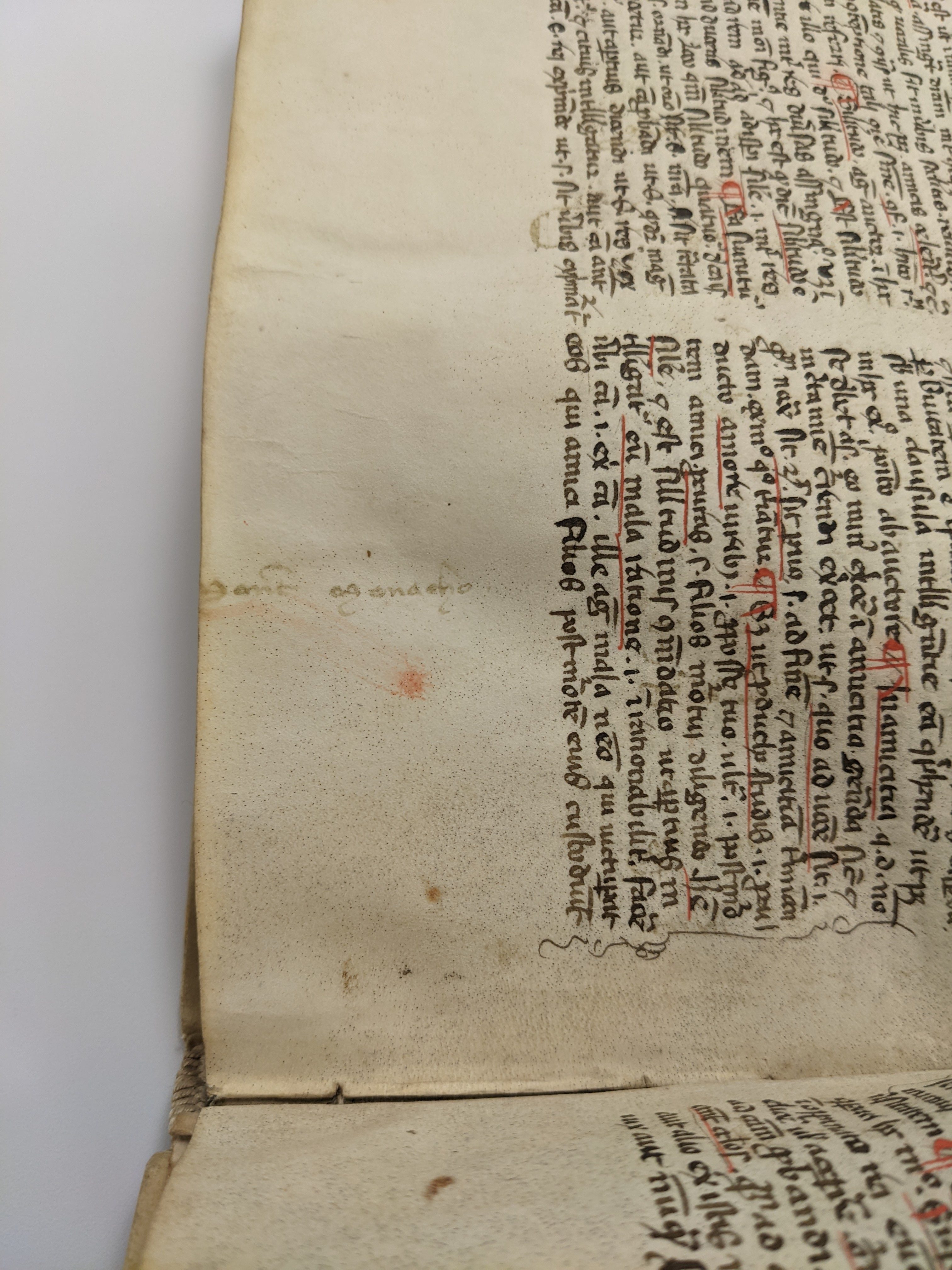

Find out more about Ms. Codex 1630 and Ms. Codex 1629 by reading the full records on Franklin:
Ms. Codex 1630: https://franklin.library.upenn.edu/catalog/FRANKLIN_9958935643503681
Ms. Codex 1629: https://franklin.library.upenn.edu/catalog/FRANKLIN_9958752123503681
You can watch the recording of the March 9 Coffee With A Codex here.
We host Coffee With A Codex every Wednesday at 12pm ET / 5pm GMT on Zoom. For a schedule three weeks ahead, visit our main page here.

